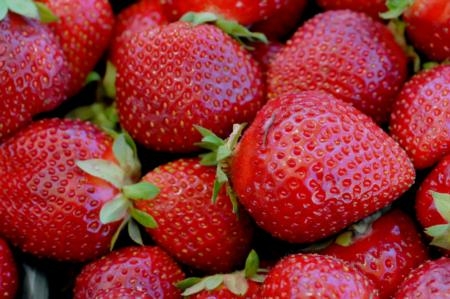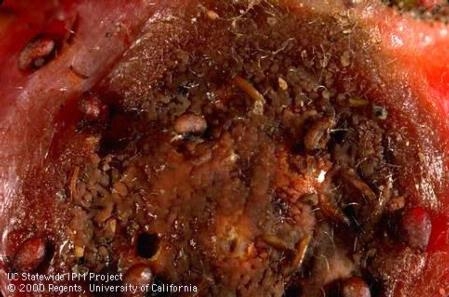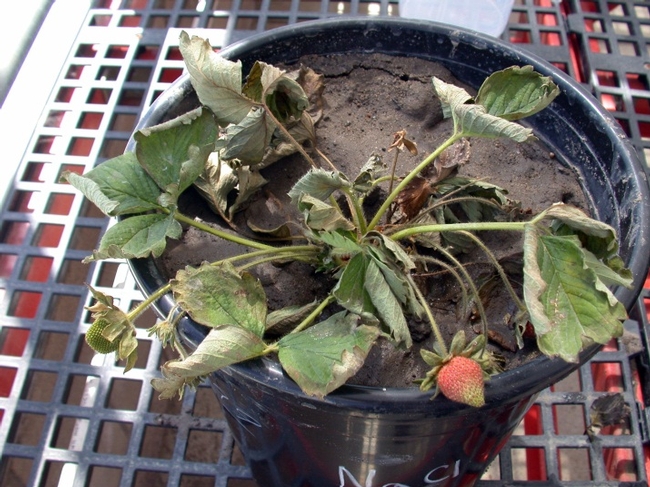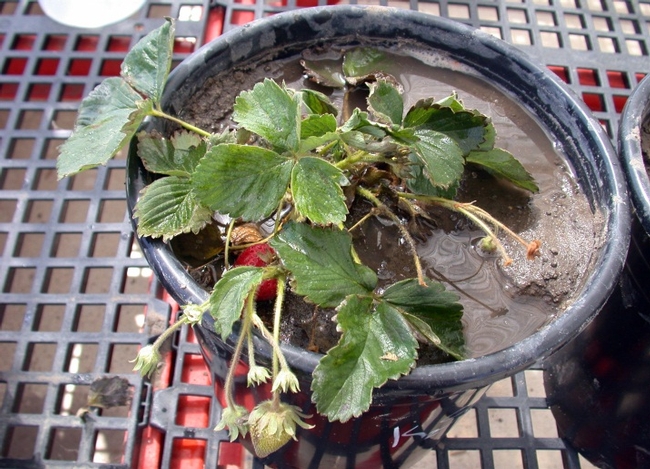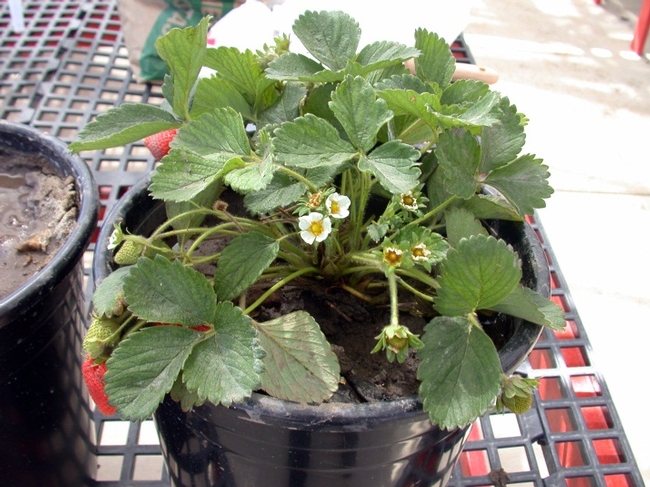
Posts Tagged: local research
4th Annual Research Symposium to be Held

That's when UC Ventura County Cooperative Extension and the UC Hansen Agricultural Center will host the 4th Annual Research Symposium.
Agricultural experts will speak on:
- Mitigating alternate bearing in "Nules" Clementine and "Pixie" Mandarin in Ventura County
- Nutrient uptake of different California native plants to be used as biofilters
- Optimizing anaerobic soil disinfestation
- Pest control and restoration efforts in Ventura County
- Undergraduate agriculture research update from California State University, Channel Islands
The event will include coffee and a continental breakfast.
Date: November 7, 2012
Time: 8:30 am to 12:00 noon
Location: Courtyard by Marriott
600 E. Esplanade Drive
Oxnard, CA
Contact: 805-525-9293 X214
sbmiller@ucanr.edu
Click here for flyer and agenda.
Register at: http://ucce.ucdavis.edu/survey/survey.cfm?surveynumber=9442
Reducing the incidence of strawberry anthracnose
Strawberry production growers face many challenges. One such challenge is strawberry anthracnose, which is caused by Colletotrichum acutatum. This plant pathogen is often undetectable on transplants purchased from nurseries for the planting season, but can become very destructive after transplanted into the field.
UCCE’s Oleg Daugovish and collaborators researched this disease and how to best reduce risk and loss. The researchers studied irrigation systems effects on fruit yields, canopy size, and crown tissue infection to determine best management practices.
Their research has recently been published in the American Society for Horticultural Science Journal. You may view the abstract at this site. The full text may also be viewed by following a link on the abstract page. The full article may also be viewed in the UC Cooperative Extension, Ventura County office.
Apium virus Y on celery in coastal California
California farms produce 93% of the celery grown in the United States. The crop thrives in coastal California’s moderate climate. Celery is an important crop in Ventura County with 40% of the state’s acreage farmed here. Valued at over $182 million, it was the second most profitable crop for Ventura County agricultural producers in 2010, which are the most recent statistics available.
Most celery in the field is planted as transplants. Transplants are typically grown under high humidity and high plant density conditions and are subject to seedborne pathogens. The most significant being Septoria apiicola (the causal agent of Septoria late blight) and Pseudomonas syringae pv. apii (the causal agent of bacterial blight). These diseases can be carried from the transplants into the field. As the plants mature, these diseases can cause plants to become unmarketable at a great loss to the growers.
UCCE’s Oleg Daugovish and collaborators researched these pathogens and how to best reduce disease and loss in the field. Over four years, the researchers documented that: seed, seedlings, weeds located in or near fields that harbor the virus can cause the disease in celery. This disease is likely transmitted by aphids, vectoring the virus.
The studies provided practices growers can use to manage this disease. Findings indicated that growers can control the pathogens by managing poison hemlock weed populations, controlling aphids, and planting celery cultivars that are not susceptible to the pathogens.
The interpretive and technical summaries of the research report can be viewed on this page of the USDA’s Agricultural Research Service. The full text can be accessed through the American Phytopathological Society, or at the UCCE office in Ventura County.
Not all salts are created equal
We have many highly salt sensitive crops in Ventura County: strawberry, avocados, blueberries. Rainwater, the purest kind, is excellent for leaching salts, but, in years with low rainfall, salt accumulation and resulting toxicity is a big concern.
Plant reaction to salts varies among varieties, stages of growths and environmental conditions and, perhaps most importantly, with the type of salts that they are exposed to. We typically determine salinity of water and soil by measuring Electrical Conductivity (EC): the more salts are present the greater is the capacity to conduct electric current. In fact, there are guidelines for most crops that show at which EC level you would expect negative effects on plant growth and productivity. Yet there seems to be a discrepancy between the guidelines and what actually happens in the field. For example, University of California (UC) guidelines suggest that strawberry injury and yield reductions can occur at EC=1 dS/m. However, in several Ventura County fields we have healthy productive strawberry in soils with EC >4 dS/m. These large differences in tolerable EC levels result from the fact that the guidelines were developed using sodium chloride, while Ventura county soils/waters most frequently have calcium and sulfates as primary components of EC. Recent studies at UC Riverside showed the specific negative chloride effect on strawberry fruit production, while studies elsewhere have documented that sodium can also be more harmful than other ions such as calcium and potassium. Because we have calcium-rich soil, and even irrigation water often contains calcium sulfate, our crops can manage well even with EC levels well above 1 dS/m. In fact calcium and magnesium help to counteract the negative effects of sodium in the soil salt solution.
In a demonstration, we wanted to show that a very salty water (EC=20 dS/m) will have different effects on mature strawberry plants depending on the ion composition of the salts in that water. Indeed, after four days of watering with sodium chloride solution, the plants had severe injury symptoms and were dying. However, the same salt concentration of potassium sulfate only resulted in slight marginal leaf burn and mild stunting. Plants irrigated with distilled water (that imitated rain water) looked perfect, of course.
The important points of these demonstrations and field evaluations were:
- EC values in water or soil analyses only show total salinity and one needs to look at specific ions in the report to evaluate the potential effects on sensitive plants.
- Sodium and chloride are a lot more damaging that potassium and sulfate and we’re planning to evaluate several other salts and develop realistic thresholds for safe strawberry production in their presence.
- At high concentrations in the root zone fertilizers (such as potassium sulfate, a ‘safer’ salt) can injure plants and reduce their productivity
- Typical irrigation with drip lines placed between planting rows does not affect salts in the root system, unless excessive amount of water are applied to induce leaching.
Irrigation field day
UC Farm Advisor Oleg Daugovish will hold an Irrigation field day Thursday, April 19 from 9:00 am to 11:15 am.
Scheduled topics include:
- Update on conditional waiver and requirements for irrigated lands in Ventura County
- Evaluation of three differing irrigation regimes in California strawberry
- Salts and soil analyses in strawberry beds under different irrigation regimes
- Soil test results interpretation and corrective management
- View experiment plots onsite
VCALIG educational credits have been requested from the Los Angeles Regional Water Quality Control Board.
There is no cost to attend. If you have questions, require translation into Spanish, or to register please contact Oleg Daugovish at 805.645.1454 or odaguovish@ucdavis.edu. More information can be found on the agenda.
In the event of rain, the meeting will be held at the UCCE Conference Room located at 669 County Square Drive in Ventura.
